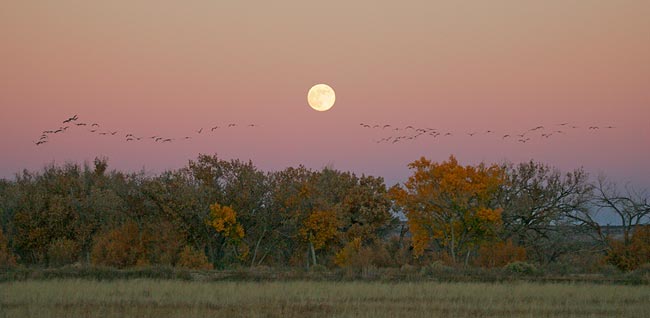

Exposure Simplified
Here are the basics.
Get in the habit of working in Av Mode and adjusting the exposure suggested by your camera’s evaluative or matrix meter reading by dialing in exposure compensation.
When the sun is out at full strength, that is, on a clear day at least an hour after sunrise or at least an hour before sunset, your camera’s evaluative or matrix meter is smart. It is rare in these conditions that you will need to compensate more than 1/3 stop in either direction.
When you are working in the shade, or when it is cloudy or overcast, or when the sun is out at less than full strength, then your camera’s evaluative or matrix meter is dumb. You will need to help it out in order to get the exposure that you want. The closer your scene is to white, the more you will need to help the meter.
1: If the sun is out at full strength and what you see in your viewfinder averages to a middle-tone or lighter and there are no white or bright highlights, you can use the metered exposure.
2: If the sun is out at full strength and what you see in your viewfinder averages to darker than a middle-tone and there are no white or bright highlights, you can use the metered exposure less 1/3 stop.
3: If there bright or white highlights in #1 or # 2, use 1/3 stop less light than recommended above.
4: If you are working in the shade, if it is cloudy or overcast, or if the sun is out at less than full strength and what you see in the viewfinder averages to a middle-tone, the best exposure will always be either the metered exposure or the metered exposure + 1/3 stop.
5- If you are working in the shade, if it is cloudy or overcast, or if the sun is out at less than full strength and what you see in the viewfinder averages to lighter than a middle-tone, you will need to add light to the metered exposure to come up with a pleasing exposure. The lighter the scene, the more light you need to add.
For scenes a bit lighter than a middle tone, add 2/3 stop of light.
For images well brighter than a middle tone, add 1 full stop of light.
For images that average to white, add 1 1/3 stops of light.
In white-out conditions add 2 full stops of light.
6- If you are working in the shade, if it is cloudy or overcast, or if the sun is out at less than full strength and what you see in the viewfinder averages to darker than a middle-tone and their are no bright or white highlights, you can use the metered exposure.
Because of the wordy qualifications that needed to be included above, the principles may seem more complex than they really are. To simplify things even further, consider the following:
Situation #1- Sun out, middle tone or brighter = 0.
Situation #2- Sun out, darker than a middle tone = -1/3.
Situation #3- Sun out, bright highlights against middle tone = -1/3; against dark = -2/3.
Situation #4- Sun in, middle tone = 0 or +1/3.
Situation #5- Sun in. Lighter than a middle tone = +2/3.
Well brighter than a middle tone = +1.
White: +1 1/3.
White-out conditions: +2.
Situation #6-Sun in, darker than a middle-tone = 0.
In the examples that follow, we shall walk you through the reasoning for each exposure choice. By studying these examples and the captions that accompany each of the images in this book, you can learn to apply this rather simple system quickly and easily so that you can come up with a workable exposure in virtually all situations.
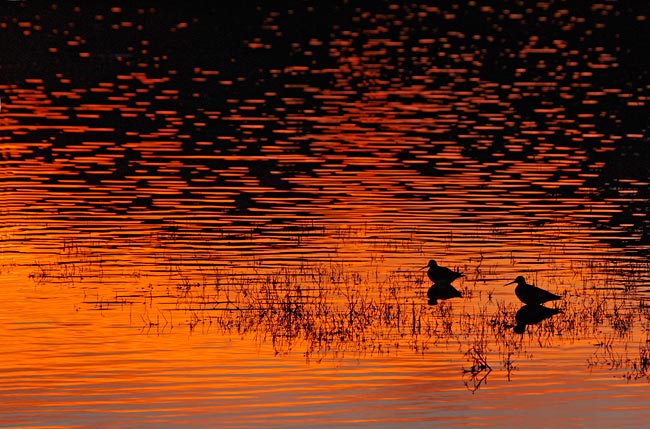
BAA BIG LENS ULTIMATE BEANBAG ANNOUNCEMENT
More than three years ago I designed the perfect big lens bean bag. Problem was, try as I might, I just could not get it made. About five months ago I hooked up with John Stanford, founder and original owner of Vested Interest, the folks who make the great X-tra Hand vest that I use every day. (John sold the business to the very capable John Storrie a few years back. To learn about X-tra Hand vests visit: http://www.vestedinterest.com/)
Well, after testing several prototypes I am happy; heck, I am thrilled. I am so in love with what I have created that I have ordered 100 units of the BAA Big Lens Ultimate Beanbag, the BLUBB. The entire bag is made of durable nylon pack cloth and each section is individually hot-cut to sear the edges; this prevents raveling. As nylon can be rather noisy and slippery, the surface that the lens is placed on has a layer of heavy duty cotton duck fabric sewn on top of the nylon fabric. The entire upper surface of the BLUBB is concave so that the lens will stay put. The inner surfaces that are placed over the door-frame or car window have a large piece of Toughtek non-slip fabric sewn in place to help keep the bag from slipping, especially in vehicles where the driver's window angles downward to the right. All of the fabrics have a water-repellent (but not water-proof) finish. The entire bag is sewn with nylon thread used in the parachute industry. The bag closes with a top quality YKK nylon zipper. All seams are sewn twice to help prevent failure. The bag is made in America to extremely high standards.
The bag is large (roughly 12X10X6") so that your lens will be totally steady. My bag, the final prototype, weighs almost exactly 16 lbs. after being filled with nearly four complete 4 lb. bags of Goya Pinto Beans purchased at Wal-Mart. For flight or action photography from your vehicle combining the BLUBB with a Panning Ground Pod is an amazing combination. All BLUBB purchases will include a detailed instructional file sent by e-mail explaining exactly how to use and get the most out of your BLUBB.
If you would like to see photos of the BLUBB, please e-mail with the words BLUBB Photos Please cut and pasted into the subject line. I fully expect that once the word is out that there will be a long waiting list for this product as each is hand-sewn. Supply will be quite limited and from what I can tell, demand will be sky-high. Everyone who has seen me testing the various prototypes has said, "Put me down for one."
One BLUBB will cost you $100 (shipped empty, no beans included) plus $6 shipping and handling (US Priority Mail/signature required). We are now accepting pre-orders for the BLUBB. Your credit card will not be billed until the product ships. We will ship Bulbs overseas only by Fed-X; please e-mail for costs and be sure to include your complete address including country. If you work from your vehicle you will surely want to be the first kid on your block to have your very own BAA BLUBB. Just prior to sending this Bulletin, I learned that we will be receiving our first shipment of twenty bags right around the first of the year. I have already sold three of the twenty...

LENS PEN NOTICE
We will soon be back-ordered on the Lens Pen Combo Kit, most likely be today. We should have another 300 in stock by the end of next week, but with the slow mail service due to the holidays, we might be out of stock until the first week of the new year. We will continue to accept orders and will ship the back-orders the moment we receive our next batch.
CONTEST RESULTS
Alas, though six folks picked my first favorite image, none of them connected on any of their other picks. We will run another contest in the future featuring fewer photos. In addition, the winner will need only to pick my two favorites. Thanks to all who joined in the fun.
The results were quite interesting. Image #3 (Snow Geese/Only Three) was the runaway favorite with 28 votes (including 10 first place votes) totaling 61 points. Image #2 (Snow Geese Blast-off Pano) tallied 21 votes for a total of 48 points, and image # 8 (Snow Geese/Purple Dawn) also had 21 votes but only amassed 38 points. My three favorites (in order) were # 4 (Sandhill Crane/Flash Flight Plus a Wing), #7 (Cottonwood Blur), and #9 (Snow Goose/Yellow Dawn). Honest... Amazingly, #5, one of the best-ever images of a Northern Pintail got zero votes and zero points. If you would like to see all the images, visit the Bulletin Archives and click on #189
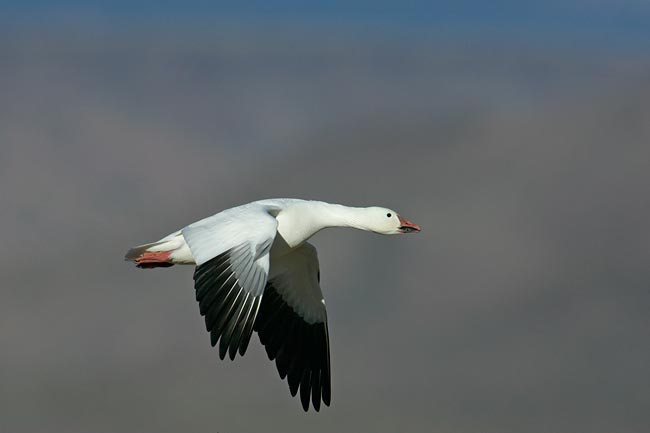
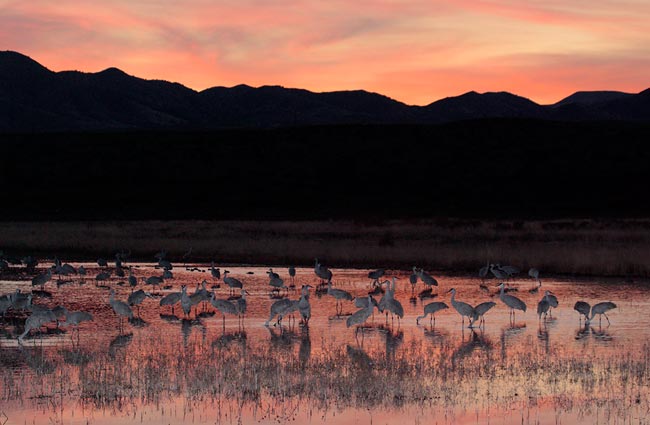
FOUR GREAT WEB SITES
Check these out:
John Moran, Florida's unofficial Photographer Laureate: www.johnmoranphoto.com
Gustav Verderber, just a damned good nature photographer: http://www.sojournsinnature.com/purchase.php
Jim Zipp, one of the world's greatest raptor photographers: http://www.jimzipp.com/
Here is another excerpt from the new book. You need to read down a ways to get to the great web site:
Important Notes for Digital Photographers
It goes almost without saying that new digital cameras come onto the market almost as fast as the seasons change. Today’s latest-greatest body may be near-obsolescent in a year. My 11 megapixel Canon EOS 1Ds cost me in excess of $7,000 when I purchased it new about three years ago. I hope to sell it soon for about $2,200… Do understand that the camera is perfectly capable of making great images, but as compared to the newer models currently available, it has severe limitations. So what are the factors that one needs to consider when purchasing a digital camera body?
The pluses and minuses of the entire system including but not limited to lenses, flashes, teleconverters, extension tubes (or the lack thereof), and other accessories. The file size, as measured in megapixels, and the quality of those pixels. (These factors will determine the size of the largest sharp prints that you will be able to make from your digital files.) Frame rate. Buffer size. (The larger the buffer the more images you can make in a long sequence without having to wait for the images to write to the card; when the buffer is full, you cannot make a new image.) Autofocus performance. Ergonomics, including the feel of the body, the position of the controls and the ease operation. Menu options and custom and personal functions. Flash synch speed. Image display. Software options. And dozens and dozens of additional features.
As a complete discussion of each of the factors above is clearly well beyond the scope of this book, those seeking complete technical information and specifications on virtually all digital camera bodies are directed to Phil Askey’s amazingly comprehensive web site, www.dpreview.com. After opening the home page, first click on cameras, then select the brand that you wish to investigate, and finally click on the model. In his full reviews, Phil covers body and design features, camera operations, controls, and displays, menu options, data processing times, and file sizes. There is also complete coverage of camera body features and accompanying software options, as well as photographic tests, comparisons with like-class camera bodies, review conclusions, and a sample image gallery. Such coverage is obviously beyond the scope of this book. www.dpreview.com is an incredible and invaluable research tool and readers are urged to utilize it.
Once you have purchased a camera, one of the best but often overlooked ways to learn to better use it, is to actually read and study the camera body manual
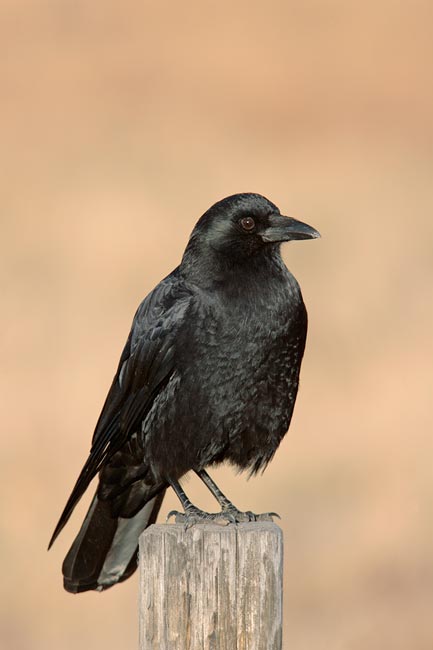
20D QUESTION
Here is my reply to an e-mail question from Marc Schoenhotz:
Hi Marc,
MS: Is the 500 f/4L IS, the 1.4X II TC, and the 20D a mismatched combination for capturing images of birds in flight?
AM: While AF with the 20D and the 1.4TC will be slowed considerably, you are missing an important point. The 20D comes with a "built-in" teleconverter, the 1.6X crop factor... Just put the 20D on the five IS and you will have a great set-up for flight photography. The effective focal length will be 800mm. The farther the birds from your position, the easier it will be to frame the image and to follow them in flight. And 16X will put them far away! best and love, artie

APERTURE BLOG
MAC -users can check out Scott Bourne's Aperture Blog at www.aperturetricks.com. (PC-users should be using Breezebrowser Pro: http://www.birdsasart.com/breezebrowser.htm
IPT KUDOS
Here are three recent e-mails that warmed my heart and put a smile on my face:
From James S. White, multiple IPT veteran:
Hi Art, Seasons Greetings and Happy New Year! We are looking forward to the Tanzania trip in January. I remember you talking about your knee on the Bear Boat, but had forgotten you were getting some work done on it. I hope that you are pleased with the results. My Linda, is having her knee replaced in May. She has had previous efforts to rescue it, but to no avail. I love hearing about Alissa, your younger daughter. She surely has had a really interesting life. I really appreciate all of your professional abilities and your willingness to share everything with people like me. You have provided me with inspiration as well as many interesting hours photographing subjects I had only read about. Some I had never even heard of! Here's to another interesting year. Best, Jim.
From Lou Newman, multiple IPT and Bosque 2005 veteran:
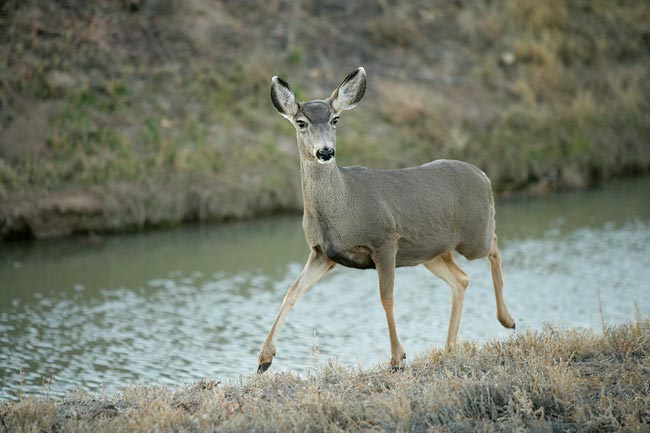
FORT
DESOTO/SARASOTA IPT,
GALAPAGOS PHOTO CRUISE/YACHT BELUGA
JUNE 30-
BOSQUE IPTS NOV 14-16, 19-21, 25-27, and DEC 4-7. All 3-DAYs: $929. For details see Bulletin 189 in the archives.

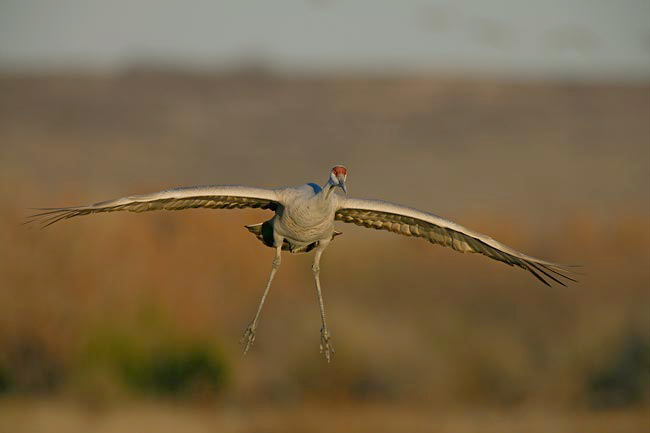
WIMBERLEY HEAD V2 DELAYED
We received the notice below from our good friends at Wimberley. We thank all those who have pre-ordered with us for their patience and applaud Wimberley for wanting to get it right.
The release of the new Wimberley Head Version II (WH-200) will be delayed until after the first of the year. From an engineering standpoint this new head requires an entirely different production process than the old version and we are working very hard with our vendor to refine this new process in order to provide you with the very best product available. We apologize for this inconvenience and are very aware and extremely appreciative of everyone's patience and understanding. If you have any questions please contact us directly at 888-665-2746.